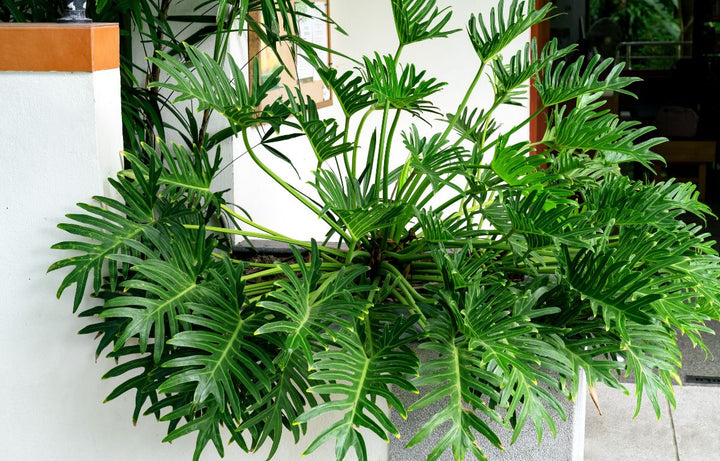
Plant Profile: Philodendron Xanadu
Plant Profile: Philodendron Xanadu
Scientifically known as Thaumatophyllum Xanadu, the Philodendron Xanadu belongs to the vast Araceae family. This family includes species native to many continents, though they are typically found in the tropical climates of America, Asia, and Africa. Originally from the Brazilian rainforest, the Philodendron Xanadu is highly adaptable and can thrive in a variety of climates and conditions. Its lush, carved-lobed leaf shape gives a tropical appearance, making it a striking focal point in homes and gardens around the world.

Initially named Philodendron ‘Winterbourn,’ this evergreen shrub was renamed by House Plants of Australia in 1988. It was then trademarked and released widely across the country under its new, more popular name. The exact reason behind the name "Xanadu" is not well-documented. Contrary to popular belief, it was not inspired by Olivia Newton-John’s 1980 movie. Instead, it is believed to be named after the mythical city of Xanadu from Samuel Taylor Coleridge's poem "Kubla Khan," lending the plant a mystical allure that attracts plant enthusiasts seeking exotic varieties.
Maintenance and Care Requirements
Light: Philodendron Xanadu generally thrives in bright, indirect light but can be adaptable to a variety of conditions. However, avoid direct sunlight as it can scorch the leaves, and be aware that low light conditions may slow down growth.
Watering: Allow the top inch of soil to dry out before watering. Overwatering can lead to root rot, while underwatering can cause the leaves to wilt. It's best to water thoroughly, allowing excess water to drain from the pot.
Soil: Use a well-draining, peat-based potting mix. A mix of peat moss, perlite, and pine bark works well to provide both moisture retention and good drainage.
Temperature and Humidity: Maintain temperatures between 18-29°C. Philodendron Xanadu prefers moderate to high humidity levels. If your home is dry, consider placing a humidifier nearby or misting the plant occasionally.
Fertilisation: Feed your Philodendron Xanadu with a balanced liquid fertiliser once a month during the growing season (spring and summer). Reduce feeding during the winter months when growth slows down.

Common Problems and Solutions
Yellowing Leaves: This could indicate overwatering or poor drainage. Ensure the plant's pot has drainage holes, and adjust your watering frequency accordingly.
Pests: Philodendron Xanadu is susceptible to pests like spider mites and mealybugs. Treat infestations promptly with insecticidal soap or neem oil.
Brown Leaf Tips: This may be caused by dry air or over-fertilisation. Increase humidity levels and reduce fertilisation to remedy the issue.
Leggy Growth: Insufficient light can cause the plant to become leggy. Move it to a brighter location, but avoid direct sunlight.
Toxicity: Like many other plants in the Philodendron genus, Philodendron Xanadu contains calcium oxalate crystals, which are toxic to humans and animals if ingested. These crystals can cause symptoms such as irritation of the mouth, throat, and digestive tract, swelling, drooling, and difficulty swallowing. Therefore, it's important to keep this plant out of reach of children and pets and seek medical assistance if symptoms occur.

Propagating a Philodendron Xanadu
Dividing its root ball: Water the plant, remove it from the pot, and separate the roots with a clean knife. Replant divisions in fresh potting mix and water thoroughly. Place in bright, indirect light and maintain humidity. New growth appears in a few weeks.
Stem Cutting: Cut a healthy stem below a node, removing lower leaves, optionally using rooting hormone, planting in well-draining soil, covering with a plastic bag for humidity, placing in indirect light, and keeping the soil moist until roots develop. Alternatively, place the cutting in a jar of water, and keep it in bright, indirect light. Change the water weekly, and once roots develop, transfer the cutting to soil.
Always use clean, sharp tools to prevent the spread of disease. Higher humidity levels can help the new divisions establish roots more quickly, and new growth may take a few weeks to appear. Be patient and maintain consistent care routines.
Philodendron Xanadu is not only a visually striking plant but also a relatively low-maintenance addition to any indoor or outdoor garden. With the right care and attention to its needs, it can thrive and bring a touch of the tropics into your home.
